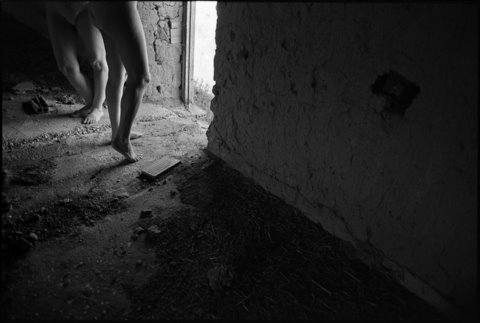_____________________________________________________________
2
SHOOTING
In the Rencontres d’Arles of this year there is an exhibition about that old fashioned fun of a fair called “photographical shootings” that disappeared in the 1970s. The idea was to shoot at a target and if
the bullet hit the center, a camera would automatically take a photo of the shooter. The photo was the prize. A different thing happened to
an acquaintance of mine who was a hunter, his specialty was deer; one day he decided to breed them in lands of his property and never again was he able to hunt, now he takes photos of the animals. He replaced the rifle with a Canon. A third case is that of a colleague who took photos of a person on the street of a German city and had to face legal lawsuits that culminated in him having to pay a large indemnity. In the act of taking photographs and the language that accompanies it; loading (the camera), aiming at the objective, shooting, there is a great similarity with the act of killing, of using guns.
Taking photographs is to symbolically snatch away the object we photograph. In some cultures, when he takes a photo the photographer usurps the soul of the photographed person. In the west we have gotten rid of the soul a long time ago, but we have replaced it with intimacy, that luxury of the 20th century, we need to preserve at all cost as before we looked after our “immortal part”. One myth replaces another and establishes a new system of taboos and prohibitions. That is why taking photos is not free of dangers that are extremely difficult to avoid, even more when the cameras
are ubiquitous and some of them undetectable.


